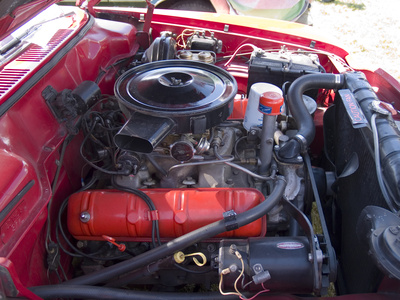
The Quadrajet carburetor was designed by the Rochester products division of GM and was also built by Carter. Both have identical designs and were very popular on many makes of vehicles, in particular the GM Chevy cars and trucks. The Quadrajet not only performed well on stock cars but found its way into the high-performance market of street rods and muscle cars. What was lacking in the design, until later, was a method to tune them for higher performance applications. Fortunately, a few enthusiasts and designers came up with some tips and tricks to add higher power and performance curves to the Quadrajet.
Given the size of the very small stock carburetor bowl in the Quadrajet, a way was found to increase the fuel flow volume to the bowl. Take off the small inlet fuel line fitting and remove the bronze or paper filter. Leave the element out and reattach the line. Splice in one of the larger see-though fuel filters into the inlet line, by cutting the fuel line and using two rubber hoses and clamps to secure the new filter. This will allow more fuel volume to enter the bowl, keeping the level high enough for rapid acceleration fuel demands.
Remove the stock needle seat that came with the carburetor. Replace it with the GM replacement part number 7035142. With large "windows" and a .136 inlet-sized orifice, it will allow for an even larger fuel flow capacity. This was the needle and seat used on the high-performance ram air GTOs and Firebirds. These parts can still be purchased, but it requires you buy them from GM in lots of 10, which still remains a cheap investment.
Find the small plastic baffle that sits next to the power piston. Remove it and place it in a vice, but do not tighten it too tight. Take a coping saw and cut away about 1/4-inch of the bottom of the baffle. Sand the cut mark down to make it smooth. Install the baffle back into the carburetor in the manner you removed it. This modification will increase the float bowl volume by taking out the extra surface area of the baffle.
Unscrew the air horn (top carburetor plate). Remove the accelerator pump plunger from its bore, along with the cup and spring. Find the rod where it rides against the pump actuator lever. Remove about 1/8-inch of metal from the tip of the rod with a file. This will give more travel height to the plunger, allowing a small reserve of fuel to be used for rapid acceleration (an added boost). Then install a new spring and cup.
With the air horn off, but with the gasket still in place, look at the discharge passages that have been machined into the bowl. Comparing the sizes of the machined holes to those of the gasket holes (where they mate), you will find the gasket holes much smaller. Gently ream out the gasket holes to the size of the machine holes or just a tad lager. This modification will give the fuel an unrestricted shot down into the carburetor.
To replace the jets, keep in mind that sizes ranging from .070 to .074 will work very well as primary jets. Note that the metering rods that you replace must be about 30 thousandths smaller, with a leeway of about a thousandth or two. If a primary jet of .074 serves as the replacement, then a metering rod size of .044 should be matched to it. Remember that any jet size going up or down more than 3 thousandths will require a metering rod size change too. GM actually stamps the sizes on the jets and rods so they can be identified easily.
Look at the top of the air horn and locate the secondary lockout tang. A small roll pin keeps it in place. You won't need it, because this device keeps the huge secondary throttle plates from opening when the choke engages. Sometimes the lockout tang gets jammed and will not let the secondary plates open at all. Discard the tang.